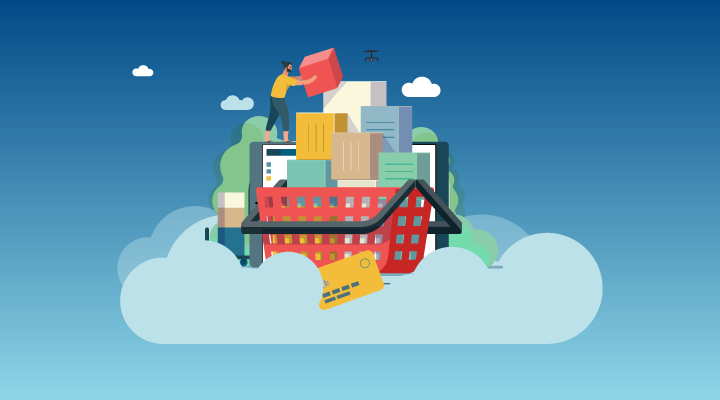The advent of Covid-19 has created three critical impacts on customer behaviour in Asia’s retail sector: a boom in contactless technology, a consumer desire for ‘revenge spending’ and monumental shifts in the categories in which people are shopping online.
The result, explains Qiping Sun, VP of LS Retail, is a market in which the need for the flexibility and transparency of unified commerce solutions has never been greater.
“The boost in online shopping may transform physical retail. Some stores may be used as warehouses, while others may become experience-focused showrooms. Online and offline will be more interwoven, but we expect physical stores will still be around – people still desire to experience products in person, to attend events,” explains Sun.
Three trends driving consumer behaviour
Unsurprisingly, with governments doing their best to promote social distancing, wearing masks and advising frequent handwashing, consumers are doing their utmost to minimise physical touchpoints. That in turn has driven a boom in the use of contactless technology and practices, such as home delivery, pick-up boxes, contactless payments and mobile wallets, not to mention online shopping, the greatest benefactor of all.
A second key trend – which Sun believes is likely to be short lived – is ‘revenge spending’ fuelled by travel restrictions.
“Middle-class consumers with more spending power are driven more by brand and quality, with a focus on premium and luxury brands. Beyond the top bracket, shoppers in general have become more selective when they buy. We have seen more health-conscious consumers, and a growing desire to know the origin and authenticity of one’s purchases.”
The third trend is perhaps the most complex: a shift in the categories in which consumers are shopping. Some sectors, like fashion, footwear, cars and jewellery, experienced sharp sales declines after Covid-19 arrived, while others did well or even thrived.
“From personal experience, I have noticed that grocery, healthy and premium food supermarkets, and convenience businesses have been flourishing. With consumers now more health conscious and selective, some of our customers’ stores – like Don Don Donki, Scoop Wholefoods, Prime Supermarkets and FamilyMart Malaysia – have been experiencing high traffic.”
Sun says the rapid change in lifestyles has led to an incredible turnaround for our hardware, DIY and bookstores. Brands he has been talking to, like Home-fix Singapore, ACE Hardware, and Kinokuniya Books, said they have been flooded with business.
Retailers respond by speeding up digitisation
Such changes in consumer behaviour have influenced the way retailers serve customers. For example a trend towards shopping online was accelerated by the pandemic as consumers sought convenience. In turn, delivery options for online deliveries grew, with a proliferation of pick-up lockers now sprouting up in residential areas across the region, along with partnerships with convenience-store chains (especially in Hong Kong) allowing people to collect or return items with a degree of human interaction pretty much 24-seven.
“Retailers have gone through rapid transformation in order to respond to changing demands, and I expect this digitisation of retail businesses to continue at high speed,” says Sun.
“For example, retailers are focusing more than ever on customer retention and on reaching customers at all possible touchpoints and channels along their journey. They are more eager than ever to adopt the latest technology, including advanced analytics tools.”
But the biggest challenge retailers face, says Sun, is finding a way to adjust product sourcing and supply-chain management to take into account two critical factors: seasonality, and the constant evolution of shopping behaviour among various consumer categories and age groups.
“Retailers are becoming more innovative with their marketing strategies, using social media, new store formats, developing inventory profiles based on store location, and devising attention-grabbing in-store displays and promotions.”
Sun expects these changes will lead to cloud services and SaaS becoming essential for retailers because it increases their speed of reaction, their ability to innovate, and helps ensure they keep up with consumer demands as they add new touchpoints.
How to build resilience and thrive through a crisis
Sun has three key recommendations for retailers looking to make the most of the changes in retail behaviour sparked by Covid-19’s impact:
Move to cloud or SaaS software: Remote deployments, upgrades and troubleshooting can help overcome logistic challenges, which can become especially problematic during a pandemic. With SaaS, retailers are always using the latest version of their software (so they can always take advantage of the latest technologies). SaaS allows additional functionality to be added when needed, such as AI and advanced analytics, with no need to change hardware or pay for costly and time-consuming integrations. Users can scale up or down as needed depending on traffic and teams collaborating from remote locations can all be kept up to date. In addition they can leverage high security from the cloud service provider. Read more here.
Add intelligence to your business: AI-powered tools can help predict customer demand (which is fundamental when it comes to deciding how much to order and how to distribute it); spot patterns and trends the human eye would miss; deliver personalisation; understand what trends tend to come together, and prepare for the future. LS Retail has experienced growing interest in its AI-powered solutions for Business Intelligence and demand forecasting, which lets retailers leverage advanced analytics without needing a data scientist.
Adopt unified commerce: Unified commerce allows you to manage your e-commerce solutions and physical stores as one combined entity, which gives visibility into inventory and customer behaviour, allowing you to move items and adapt your strategy based on changes in the market. It is also scalable, allowing new verticals to be added if required within the same platform.
“You can get a 360-degree view of your customers, who they are and what they want, and then personalise interactions with them, always knowing at a glance how your business is doing and what areas you need to improve on – all because the information is contained within a single database,” concludes Sun. Read more about LS Retail’s unified commerce solutions.






